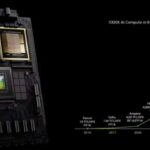Why it matters:
How do the greats spot innovation opportunities? Add “Top 5 Things” to your list.
We’ve all read about Jeff Bezos Innovation method, who uses a “Working Backwards” approach, starting with customer benefits. Or Bill Gates, who employed a structured approach to innovation through “Grand Challenges”. Or Elon Musk focus on “First Principles Thinking” and “Vertical Integration”.
Jensen Huang’s “Top 5 Things” method enables early trend detection and fosters direct, unfiltered communication within Nvidia.
The big picture:
Microsoft. Amazon. Tesla. What about Nvidia? Jensen Huang, CEO of Nvidia, uses the “Top 5 Things” method to gain a clear, unfiltered view of his company’s operations, and Innovation opportunities. This approach requires employees to send concise emails outlining their top five priorities, insights, or observations. By reading these summaries daily, Huang can quickly identify emerging trends, address issues promptly, and make informed decisions, ensuring Nvidia stays ahead in a rapidly evolving industry.
What else is different – Huang’s Unique Leadership Principles
Jensen Huang, CEO of NVIDIA, has several unexpected leadership principles that differ from the norms of corporate America. Here are some of the most notable examples from the sources:
- No Status Reports: Huang believes that traditional status reports lack ground truth due to filtering and bias as they move up the hierarchy. Instead of relying on these reports, he employs this “Top Five Things” system. Employees at all levels are encouraged to send brief emails to their teams and executives, including Huang, outlining their top five priorities, observations, or insights. Huang reads about 100 of these emails each morning, viewing it as “stochastically sampling the system” to get a direct, unfiltered view of what’s happening within the company.
- No 1:1s: Huang believes that the flattest organizational structure is the most empowering and this begins at the top. He manages roughly 40 direct reports and chooses not to conduct individual 1:1 meetings. Instead, Huang prefers to communicate with everyone simultaneously in a group setting to ensure everyone has the same information. This unorthodox approach may raise concerns about the ability to provide personalized support, career advice, or address sensitive issues. However, a former Nvidia worker clarifies that Huang’s approach doesn’t mean the absence of 1:1s across the company, just at his level, due to his unique position as the founder with decades of experience. Regular 1:1s occur at other levels of the organization.
- Public Feedback: Unlike the traditional “praise publicly, criticize privately” approach, Huang gives feedback directly in front of everyone to encourage collective learning from mistakes. He believes that transparency about failures fosters a culture of open learning and growth. However, this method may not be suitable for all individuals or situations, as public criticism can be demoralizing if not handled constructively.
- Embracing “Pain and Suffering”: Huang doesn’t shy away from hardship. He believes that enduring “pain and suffering” is crucial for achieving greatness. He feels that resilience and the ability to confront failure are essential traits for success. He prefers to “torture” his employees into greatness, believing in their potential to learn and grow. However, while this tough-love approach may resonate with some, it’s important to note not everyone thrives under constant pressure and scrutiny.
- No Formal Planning Cycles: In a rapidly changing technological landscape, Huang considers long-term strategic plans “horrible” and “ridiculous”. Instead of relying on fixed plans, he advocates for “continuous planning,” constantly observing and adapting to the evolving market. This approach allows for greater agility and responsiveness to new opportunities and challenges. It also aligns with his emphasis on intuition and quick decision-making.
Overall, Jensen Huang’s leadership style is characterized by a flat hierarchy, a focus on transparency, and a belief in the power of directness. While these unconventional principles have contributed to NVIDIA’s success, they may not be applicable to every organization or situation.
“Top Five Things” and Innovation at NVIDIA
Jensen Huang leverages the “Top Five Things” email system to stay connected with his company and, more specifically, how this unusual practice helps spot and capitalize on emerging trends.
- Early Identification of Machine Learning Potential: The “Top Five Things” system played a crucial role in identifying the potential of machine learning years before it became the industry behemoth it is today. While top executives may have been unaware, Huang, through reading employee emails, picked up on the increasing excitement and activity around this then-niche area. These “weak signals” from those working directly on the ground alerted him to the potential of GPUs for accelerating machine learning workloads, prompting significant investment in the technology that would later fuel the AI boom.
- Flattening Hierarchy and Access to “Ground Truth”: The sources emphasize that the “Top Five Things” method is far more than just a status update tool. Huang believes traditional status reports get “refined” and lose their accuracy as they move up the corporate ladder, becoming divorced from the reality on the ground. By directly accessing the insights and observations of employees at all levels, through their “Top Five Things” emails, he gains valuable unfiltered information, or “ground truth” – unvarnished perspectives that might never reach him through traditional channels.
More details:
Jensen Huang’s approach to the Top 5 things is building on his overall email communication principles, a masterclass in efficiency and clarity. Here’s a deeper dive into each of his key email preferences:
- Cut To the Chase:
- Essence: Emails should be short and directly to the point.
- Implementation: Adopt the “TL;DR” approach. Start with a summary, then dive into details if necessary.
- Benefit: Saves time for both sender and receiver, ensuring that the main points are not lost in lengthy paragraphs.
- Nail Down What You Have to Say:
- Essence: Have a clear idea of your main message before you start writing.
- Implementation: Outline your key message before drafting the email. Stick to the main points.
- Benefit: Prevents misunderstandings and ensures the core message is communicated effectively.
- Identify Key Points:
- Essence: Highlight the essential points in your email.
- Implementation: Use bullet points or numbered lists to make key points stand out.
- Benefit: Helps recipients quickly grasp the important information, facilitating faster decision-making.
- Focus On Top Priorities Each Week:
- Essence: Communicate your top five priorities for the week.
- Implementation: Send a weekly email outlining your top five tasks to your manager.
- Benefit: Aligns team efforts with organizational goals and ensures everyone is on the same page.
- Six Line Emails:
- Essence: Keep emails between five and six lines.
- Implementation: Be concise. Avoid unnecessary details and long-winded explanations.
- Benefit: Encourages brevity and ensures that emails are quick to read and respond to.
These guidelines are not only beneficial for Nvidia but also serve as best practices for effective communication in any organization. By implementing these principles, companies can improve their internal communication, leading to increased efficiency and productivity.
Example 1 of Nvidia Top 5 Things: AI Research Engineer
1. Completed initial testing of new deep learning algorithm for image recognition
2. Identified potential optimization for CUDA kernels in our latest GPU architecture
3. Scheduled meeting with autonomous driving team to discuss AI model integration
4. Reviewed and provided feedback on three research papers from our interns
5. Started exploratory work on quantum computing applications for our GPUs
Example 2 of Nvidia Top 5 Things: Product Manager
1. Finalized feature list for next-gen GeForce RTX series
2. Met with key game developers to discuss DLSS 3.0 implementation
3. Analyzed competitor’s latest GPU launch and prepared market response strategy
4. Collaborated with marketing team on upcoming product announcement at GTC
5. Reviewed customer feedback on current drivers and prioritized bug fixes
Example 3 of Nvidia Top 5 Things: Data Center Solutions Architect
1. Completed benchmark tests for new A100 GPU cluster configuration
2. Drafted proposal for energy-efficient cooling solutions in large-scale deployments
3. Assisted major cloud provider with NVIDIA AI Enterprise software integration
4. Identified potential bottlenecks in current InfiniBand networking setup
5. Began exploration of ARM-based solutions for next-gen data center products
Go deeper/ Read More / References:
https://creatoreconomy.so/p/15-life-and-work-principles-from-jensen
https://semiconductor.substack.com/p/the-leadership-philosophy-of-jensen
https://news.ycombinator.com/item?id=37486882

Experienced Machine Learning, Artificial Intelligence, Data Strategy, Information Technology, and Shared Services Executive
Things that matter:
• five largest ML models created at P&G, with over 10,000 pipeline runs/year
• initiated and operated THE data labeling platform and services for ML at P&G, with 300+ projects and millions of annotations on the platform
• Generative AI strategy for the Global Business Units Shared Services for the Brand, R&D, Manufacturing, Supply Chain, Master Data + eComm functions
• Product Management leadership for enterprise-wide Cloud applications combining data and AI
Education
Harvard Business School Executive Education: Artificial Intelligence (Competing in the Age of AI).
Northwestern University: Executive Strategies to Unlock Enterprise Value in Artificial Intelligence
University of Bucharest: Master of Computer Science from the Faculty of Mathematics
CIIM – Master of Business Administration (MBA) with a focus on Finance
Key Certifications:
AWS Certified Machine Learning – Specialty
Azure ML Artificial Intelligence Certification
Data Camp Certified Data Scientist (Python Track)




